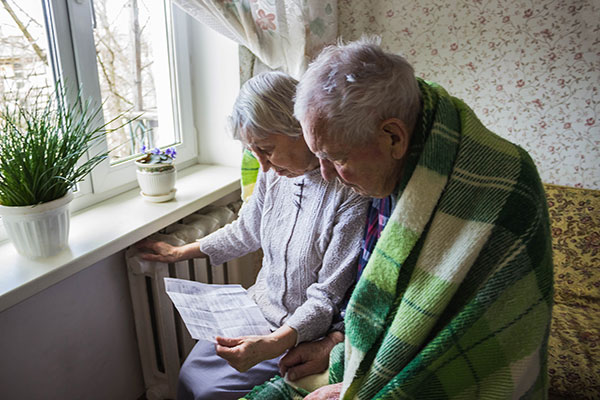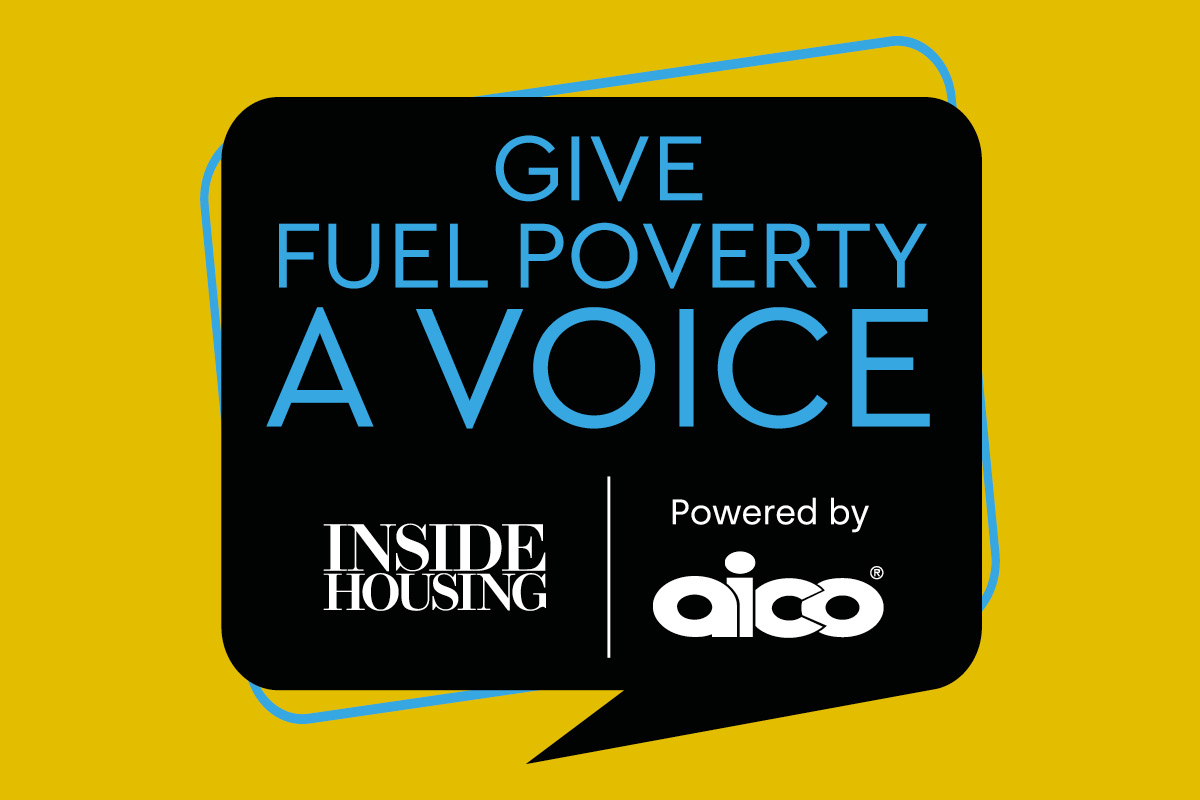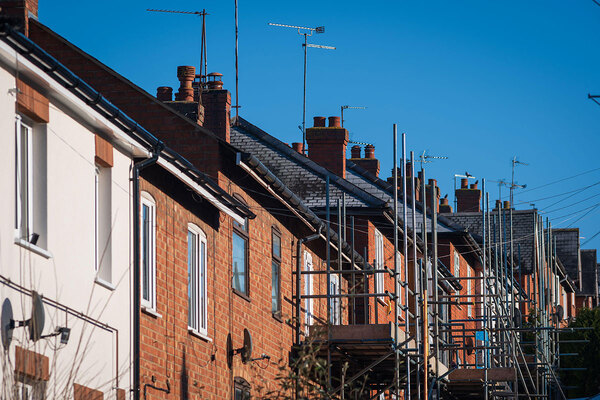How can landlords make homes energy efficient and sustainable, and tackle fuel poverty?
As part of Inside Housing’s Give Fuel Poverty a Voice campaign, in association with Aico, we speak to two experts about how planning for net zero goals can also help residents hit by the energy crisis

In association with:

The numbers and predictions about the energy crisis have made for grim reading over recent months – and as we move into winter, a significant number of UK families could find themselves in fuel poverty, despite new prime minister Liz Truss’ promise to cap energy bills at £2,500 per year for the typical household from 1 October. Two-thirds of UK families could find themselves in fuel poverty by the start of next year, according to a report from the University of York – and the price cap is then set to take another leap upwards.
Social housing tenants, many of them on low incomes, will likely be particularly afflicted by the rising cost of energy. But fuel poverty does not just affect the people living in social housing. Its consequences can impact the buildings themselves, both in terms of safety and the knock-on effects on residents’ health – and what might this mean for the sector’s long-term decarbonisation agenda?
Inside Housing spoke to two experts – Tom Boome, head of technical, innovation and climate at 6,000-home Welsh landlord ClwydAlyn, and Jack Wilkinson-Dix, policy officer at the Energy Saving Trust – to discuss these aspects of this fast-growing crisis.
Many social housing tenants do have one advantage over those in other tenures, argues Mr Wilkinson-Dix.
“For a very long time, there have been quite strict building regulations that have made tenants safer and more comfortable in their homes – and they have also improved the energy efficiency of housing,” he says. “So in lots of regions of the UK, social housing is actually the most efficient housing sector. Is it efficient enough to withstand these [energy price] increases? Probably not. But social tenants are likely to be helped by the fact that they’re in a much more regulated sector than the private rented sector.”
Added risks
Even so, as he says, this edge is not enough to shield people from this crisis – and when people cannot afford to heat their homes, they can respond in ways that can end up doing more harm than good.
“Some people are closing everything and switching everything off – even things which help the building to operate as it should in the long term,” says Mr Boome. “So they might switch off the cooker hood or the ventilation in the bathroom because they’re using electricity. That has a knock-on effect on their quality of living, because all the stale air and condensation can lead to mould spots, and that’s not good for their health either.”
The National Fire Chiefs Council – a body that provides fire services with advice – stated in June that fuel poverty is also linked with increased levels of fire risk and urged residents to use and charge electrical goods safely. Residents might resort to open fires to stay warm, for example.
The best way to address all these issues, Mr Boome says, is to take a holistic approach. Whether it is energy advice or improvements to the way they use appliances, he adds, ClwydAlyn is focusing on its residents as well as its homes, and this also helps to address any building safety issues that can arise as a result.
“An emphasis on the resident reduces any of those other knock-on effects in terms of building safety,” Mr Boome says. “So rather than just focus on making homes more energy efficient, we combine that with working closely with the residents’ team.”
Net zero and the energy crisis
Decarbonisation and tackling fuel poverty, Mr Wilkinson-Dix says, should work hand-in-hand.
“Decarbonisation, particularly when it comes to housing stock being this vehicle for also addressing fuel poverty, [should mean] putting more money into people’s pockets, having more comfortable homes, more liveable homes, homes that are cheap to run,” he says.
“So we think that the measures you would take to combat fuel poverty in someone’s home, like improving energy efficiency or installing smart energy systems so that they can take advantage of energy when it’s cheaper, all of that also helps decarbonisation as well – so we have to look at them as a synergistic set of challenges.”
Mr Boome agrees. “We try not to look at [decarbonisation and energy efficiency] as conflicting, but more as shorter-term and longer-term priorities,” he says. “The shorter-term goal would be to reduce or eliminate fuel poverty – but taking a longer-term view of decarbonising our housing stock, they are one and the same. They’re not conflicting – but the priority [now] is definitely on those shorter-term goals.”
Asked what would be the best way to help tenants through this crisis while advancing decarbonisation, Mr Boome is clear that better insulation is key.
“If you’re cold and you’re outside, you put a jumper on,” he says. “You add layers to make yourself warmer. So it is the same when insulating a home.”
But whether it is advice and support on energy efficiency or installing insulation, one of the most important factors is landlords’ relationships with their tenants. Good communication, Mr Wilkinson-Dix says, is crucial.
He cites Leeds City Council’s work to insulate high-rise blocks as an example of best practice: “They make a real point of engaging tenants early and throughout the entire process… and they talk about how it isn’t just a benefit for the individual tenant, but they’re playing their part in addressing the climate crisis. It might sound cheap and pithy, but it’s actually really important to have these conversations; it’s a really straightforward thing that goes a long way with engaging tenants.”
“It’s also about making sure that tenants know that they have somewhere that they can turn to, rather than just taking measures into their own hands,” says Mr Boome. “And fuel poverty is case-specific… So you can’t address the problem by just looking at the building. It’s much more about that person in there as well.”
That engagement could involve things like talking with residents about behavioural change that could reduce energy use, or letting them know what help is available and where to find it.
Small comfort
No one can be in any doubt about the severity of the unfolding energy and cost of living crises, or the increasing levels of hardship they are set to inflict on people across the country. But in the longer term, this situation could be a catalyst for desperately needed change – and the work done in response will benefit residents for many years to come.
“You don’t want to shy away from just how bad things could get, and how much people are struggling. The reality is that we’re facing something really quite significant,” says Mr Wilkinson-Dix. “But on the other hand, addressing it does offer lots of opportunities… This is going to actually level up, it’s going to boost productivity, it’s going to get us to net zero. We will live in more comfortable homes that are cheaper to heat over the long run. We’re facing something very serious, and we need to act now. But will it be worthwhile in the medium to long term? Absolutely.”
Home life safety specialist Aico is supporting Inside Housing’s Give Fuel Poverty a Voice campaign to push fuel poverty up the agenda. The campaign aims to understand its cause and impact to highlight and reduce the issues. #fuelpovertyvoice








